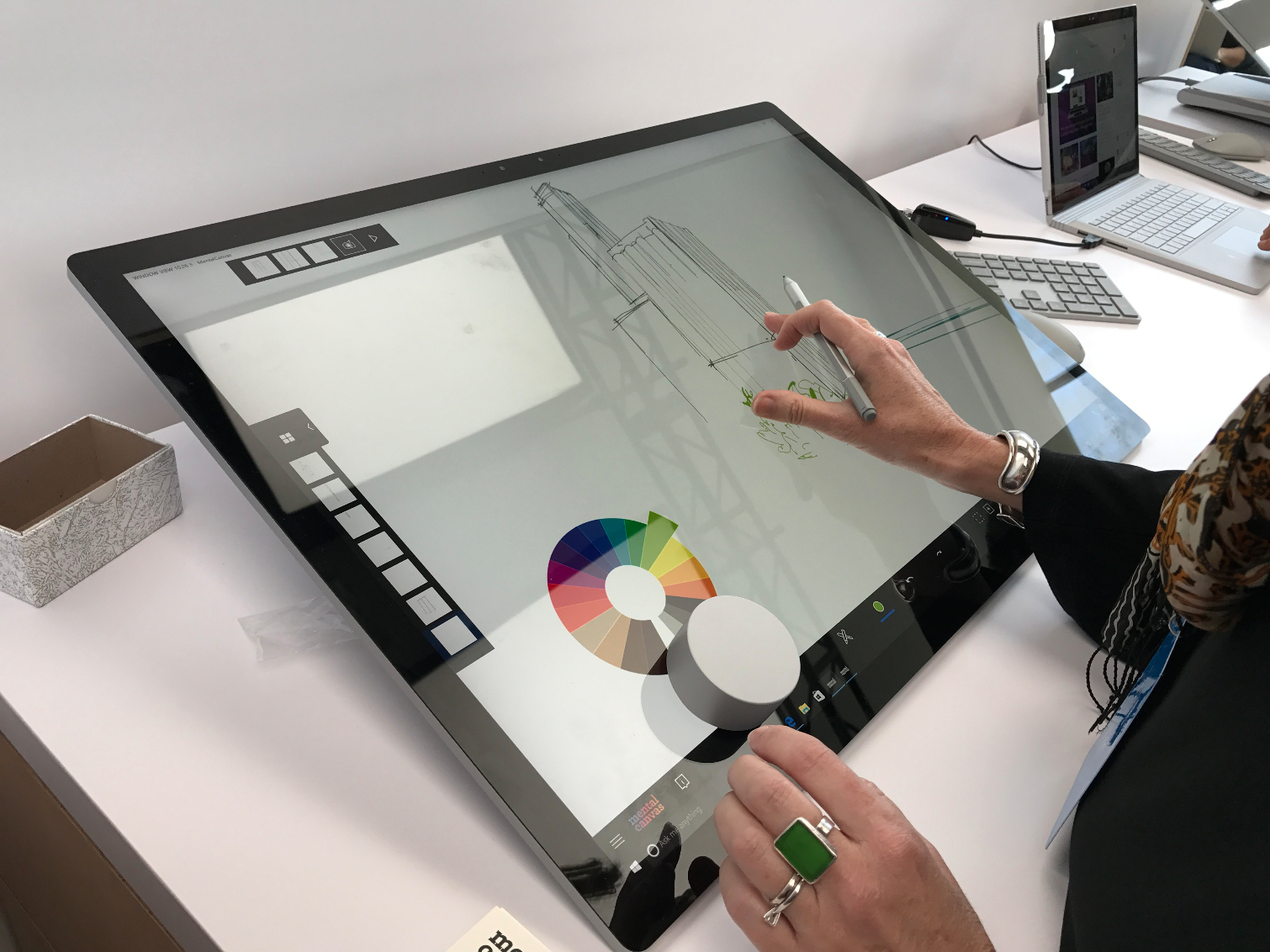Touch-Screen Mac 'Absurd?' Apple Says Yes
Apple executive Phil Schiller doesn't believe touch screens work on a desktop machine, but Microsoft thinks differently with its Surface Studio.
The Surface Studio impressed many in the tech world when Microsoft took the wraps off its $2,999 desktop PC last month. But it sounds like Apple's Phil Schiller doesn't share that point of view based on his comments about touch screen-equipped desktop machines.
"Can you imagine a 27-inch iMac where you have to reach over the air to try to touch and do things?" Schiller, Apple's senior vice president of worldwide product marketing, told Backchannel editor Steven Levy. "That becomes absurd."

To be clear, Schiller wasn't speaking specifically about the Surface Studio when he made that comment. Rather, he was outlining Apple's stance on touch interfaces -- good for mobile devices like the iPhone, iPad, and Apple Watch, and not so hot for laptops and desktop computers -- as part of Levy's review of the latest MacBook Pro. It comes a Touch Bar strip on top of the keyboard but not touch-enabled displays.
Still, it's hard not to compare and contrast between Apple's stance that touch interfaces don't work on desktop machines and Microsoft's counter-argument that they very much do.
Levy's article clearly outlines how Apple approaches its product lineup: the iPhone and iPad are computers just as much as the MacBook Pro and iMac, Schiller argues. But people use those different devices in different ways, so their design needs to follow that function.
MORE: Best All-in-One PCs
"Each one is offering customers something unique and each one is made with a simple form that perhaps is eternal," Schiller tells Levy. "People in the industry may question them--we don't, for some very simple reasons."
To that end, Apple can't understand would want to reach out over a keyboard or trackpad to jab at an iMac screen. And it's apparently done the testing to support that conclusion. Schiller tells Levy that Apple tested touch screens "a number of times over the years" to see if they worked on the Mac platform. "Our instincts were correct," Schiller added.
Some might counter that if the form of a device doesn't support touch interaction, maybe you should try changing the form itself. That's what Microsoft has seemingly done with the Surface Studio. The PC features a zero-gravity hinge and custom-tuned springs, giving the display a weightless feel when you shift it to a 20-degree angle. When my colleague Mark Spoonauer went hands-on with the Surface Studio, he found it easy to change modes and was also impressed by the optional Surface Dial, a handy tool for creative professionals that can handle tasks like changing colors on the fly.
In his interview with Levy, Schiller brings up a strong point about how designing an interface that accommodate both your fingers and input devices like a mouse just won't fly. "You can't optimize for both. It's the lowest common denominator thinking," Schiller says in the article.
We've seen more iOS features find their way into the Mac operating system over the years — Apple even changed the name OS X to macOS to mirror the naming convention of its mobile OS — and Apple trackpads now support the pinching gestures that are commonplace on the iPhone. But, based on Schiller's comments to Levy, if you're expecting Apple to take a page out Microsoft's book regarding touch interfaces on its desktops, you're in for a long wait.
As for the Touch Bar, in his review, Levy praises some of the shortcuts the strip provides, particularly for predictive typing, though he's not convinced the feature is all that transformative. (Levy also wonders if it could be the first step toward the end of a physical keyboard; you will not need to guess on what Schiller thinks about that idea.)
For our part, our review of the 13-inch MacBook Pro with Touch Bar on sister site Laptop found that model awfully expensive to justify the experience, while the 15-inch MacBook Pro looks like the better buy, even if more developers need to support the Touch Bar to make it a worthwhile feature.
Get instant access to breaking news, the hottest reviews, great deals and helpful tips.
Philip Michaels is a Managing Editor at Tom's Guide. He's been covering personal technology since 1999 and was in the building when Steve Jobs showed off the iPhone for the first time. He's been evaluating smartphones since that first iPhone debuted in 2007, and he's been following phone carriers and smartphone plans since 2015. He has strong opinions about Apple, the Oakland Athletics, old movies and proper butchery techniques. Follow him at @PhilipMichaels.

